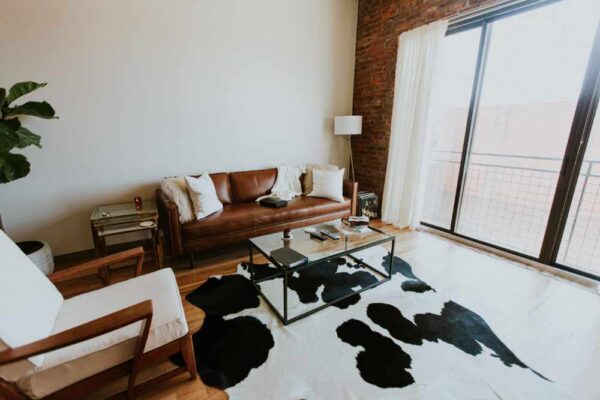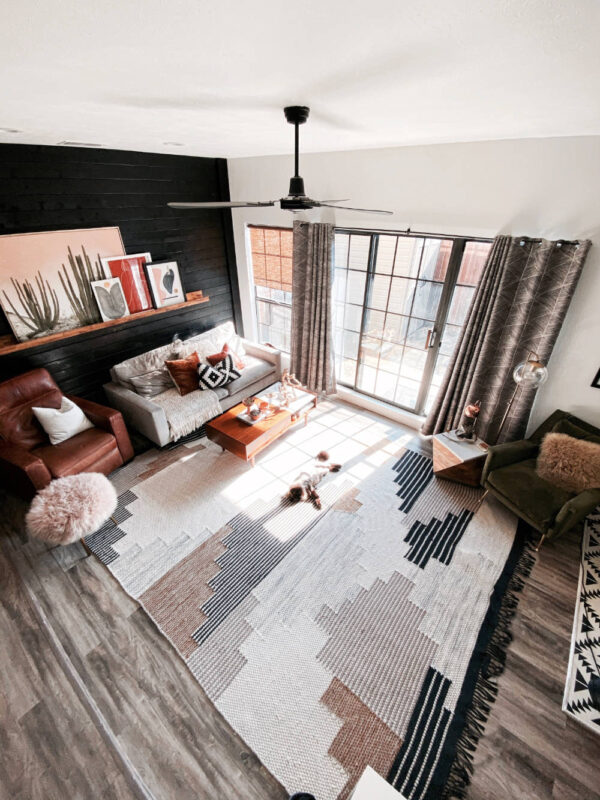How To Stop A Rug From Shedding
A few rooms in your house have been on your mind for a long time now. You could want to add a new design element to your bedroom, or you might want to warm up your living room in preparation for the chilly months ahead. All of your thoughts and ideas were carefully included in the new design, no matter the rationale for the alterations. Trying to choose the perfect rug for the new room/s, you spend a lot of time searching for the best deal! Whether you’ve selected a jute rug or hand-knotted rugs, you would still feel the excitement of placing it in your living room!
“But wait,” I hear you say. There’s a problem you didn’t know about! You can’t figure out how to stop the rug from shedding its pile. Carpets lose their fibres for various causes, and we’ll show you how to put an end to it in this post.
Is The Rug Brand New?
A rug may lose part of its natural fibre early in its life. A few weeks or months later, depending on the quality of the rug and the material it is made of, this will stop. A new rug shedding should stop after a few vacuuming sessions and a few months of typical use. If your rug continues to shed after a few months, there may be a problem that has to be addressed.

Vacuuming
Suppose you see that your shaggy rug, or any other style of rug, is beginning to shed. In that case, it might be tempting to use a variety of vacuum settings and attachments in an attempt to remove all of the loose pile and prevent the rug from shedding in its entirety. This may actually be doing more damage than good to your rug, and you may be causing the rug to shed more as you clean it more frequently. Vacuuming your rug is all about doing it correctly.
Using a beater bar or brush extension on your vacuum will only result in further rug fiber removal. This can still happen even if you don’t have any extensions attached to your vacuum and are merely running it on a high suction setting. Vacuuming a rug involves removing any brush attachments; this ensures that any permanent beater bar is barely brushing the rug’s surface and using your vacuum cleaner on a lower power level to ensure that it isn’t needlessly ripping fibres out of the rug.
The Rug-Land: When you begin vacuuming your rug, begin by vacuuming in one straight dimension that goes parallel to the pile’s direction. Next, vacuum in a straight line that runs in the opposite direction as the pile. To get rid of the dirt that’s trapped in the rug, this way of vacuuming is the best since it ensures that every loose fibre is captured.
Rug Placement
Your carpet shedding rate may be affected by where it is placed. The wear and tear on a rug will be greater than if it were put in an area with minimal to no foot activity because of its placement in a high traffic location. To reduce shedding, position your rug under a coffee table out of the way of your bare feet. If you must place your area rug in a high-traffic location, rotating and moving it regularly will assist reduce shedding and improve the rug’s symmetry. If you’re going on vacation or otherwise leaving the house for an extended period, you may pull the rug out of the room to allow it to “cool off” before reinstalling it in its original location.
Invest in a Nonslip Underlay
An anti-slip underlay beneath your rug has several advantages in preserving its pristine state. To begin with, by holding your carpet in place, they reduce the amount of wear and strain on it. Most of all, this is useful in high-traffic regions where the rug’s backing can quickly wear out and get damaged due to constant use. Anti-slip underlay also provides a level of safety to the area where the rug is installed. You or your cat has probably slipped on a carpet that caused you to almost fall. This is not only bad for us, but it may also harm our carpeting.
The anti-slip rug pad underlay should be 2.5cm (or 1inch) shorter on each side than the rug itself when it comes to size. That way, you may have optimum slip protection and total rug coverage simultaneously, making this the best option. In general, the less a rug slides, the less hair it will lose. If you’re going to put a rug on a hardwood floor, this is the most important piece of advice you can follow. Make sure to choose a high-quality rug pad!

Trim your Rugs
This particular piece of advice pertains just to a natural wool carpet. Wool tufts will form on the surface of a new, high-quality wool rug after a few months of ownership. When you buy a wool rug, you may expect this to happen. Do not try to remove these tufts with your hands! Weakening the rug’s fibres and making it seem fuzzy will result in greater damage to its surface. This is the last thing you want after making a significant investment in a luxurious wool rug. Instead, use a pair of razor-sharp scissors to remove the remaining tufts! Once your hands are clean, wipe the rug’s surface with your hand to remove every stray wool fiber.
Know your Rug’s Purpose
Not all carpets are meant to be placed on the floor, as you may have heard. We know, it’s strange! Expensive natural fiber handmade rugs are often manufactured as wall hangings, which is a common practice. If you don’t know what you’re getting yourself into, you’ll need to conduct some study before you buy the rug. Rugs that were initially created as wall hangings might be damaged by using them on the floor, so be careful when purchasing one.
The Most Important Thing… Shop Smart!
When shopping for a rug for your house, it’s easy to be swayed by the cheaper prices of synthetic fibre rugs rather than picking a rug that complements your flooring. However, synthetic fibre rugs have advantages and disadvantages that you should be aware of before making a purchase. The following are some examples:
- They’ll shed more than natural fiber carpets.
- You may ruin natural fibre carpets more easily than synthetic ones.
- It will require replacements more frequently.
As previously said, acquiring a synthetic fibre rug if your project has a tight budget is quite acceptable. What you choose to do is entirely up to you! But as specialists in this field, we always recommend that consumers get a high-quality natural fibre rug for their room. Even though it costs more initially, a synthetic rug may last much longer in the same space than a natural fibre rug if properly maintained and cared for.
